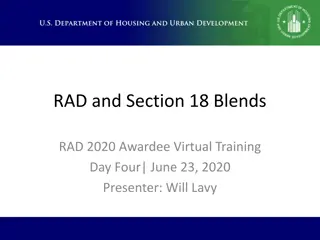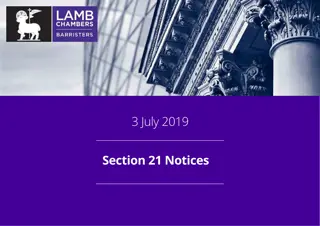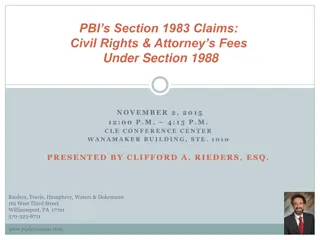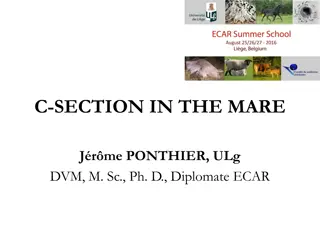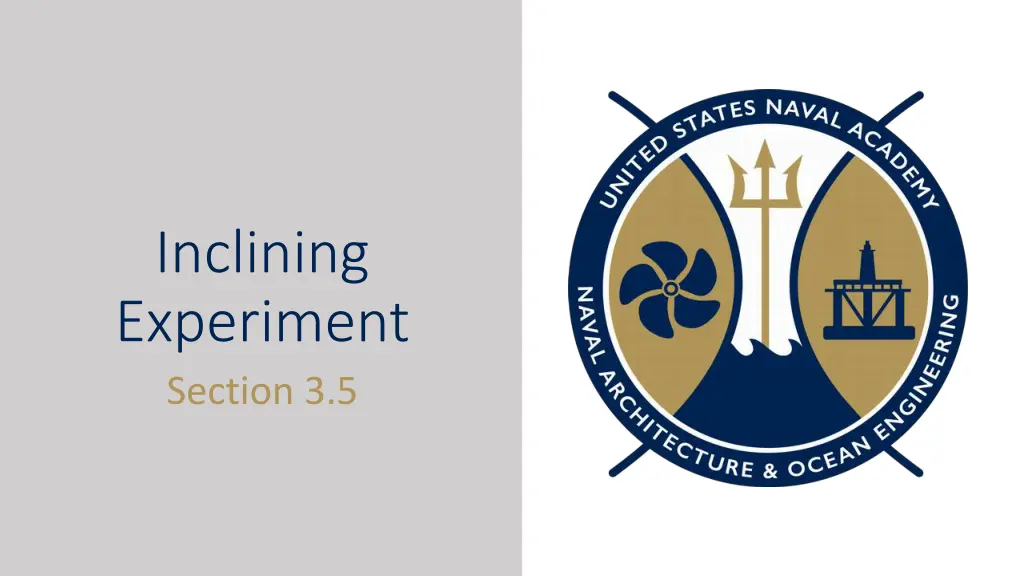
Understanding Inclining Experiment in Naval Architecture
Dive into the world of naval architecture with an exploration of the inclining experiment, from determining list angles to finding the location of KG0. Discover the tools, proofs, and the big picture of this essential process in ship design.
Download Presentation

Please find below an Image/Link to download the presentation.
The content on the website is provided AS IS for your information and personal use only. It may not be sold, licensed, or shared on other websites without obtaining consent from the author. If you encounter any issues during the download, it is possible that the publisher has removed the file from their server.
You are allowed to download the files provided on this website for personal or commercial use, subject to the condition that they are used lawfully. All files are the property of their respective owners.
The content on the website is provided AS IS for your information and personal use only. It may not be sold, licensed, or shared on other websites without obtaining consent from the author.
E N D
Presentation Transcript
Inclining Experiment Section 3.5
List Angle In the previous section, we derived the relationship and solved for list angle The location of MT is a property of the hull shape, read from the Curves of Form, for the appropriate draft (T). How do we initially set the location of G0...?
How do we find the location of the real deal, actual G0? We determine it experimentally after new construction for a class or any major permanent complex weight redistributions for a given ship (alteration/conversion/major availability). This experiment is called the Inclining Experiment
Determining KG0 Remember how we proved: MT Up to now, however, G0MT has been given based upon a KG that has been provided We ll now see how KG can be found by determining G0MT during the Inclining Experiment G1 G1 B1 B1
Inclining Experiment Big Picture By using a known weight and placing it at a known distance angle of list can be measured By repeating this process - port and starboard- we can graph the relationship between the moment created by the weight and the angle of inclination This will allow an average inclined KG to be determined, and from that a KG for the ship in a condition of no list or trim can be established
Inclining Experiment Tools Plot: Plumb Bob: Mast Inclining Moment, wt (LT-ft) dadj tan( )=dopp/dadj Scale dopp Tangent of Inclining Angle (Tan[ ])
Inclining Experiment Proof In earlier discussions an equation was derived for a shift in of a single weight: s * G0G1 = w * g0g1 Where g0g1 was the distance that the weight was shifted Let s call that distance t s * G0G1 = w * t And remember the equation for the angle of list:
Inclining Experiment Proof Note that the common term in both equations is G0G1. So let s isolate it in each equation: s ?0?1 = w t ? ? ? ?0?? tan = ?0?1 ?0?1= ? ? ? ?0?? tan =
Inclining Experiment Proof ? ? ? ?0?? tan = One more rearrangementand we ll have what we really want, G G0 0M MT T: : ? ? ?0??= tan( ) ?
Inclining Experiment Proof ? ? ?0??= tan( ) ? Let s review what we know: w -a known weight that is relocated t - distance the weight is moved tan - angle created by the weight shift s - displacement of the ship This is the formula that governs the Inclining Experiment
Inclining Experiment ? ? ?0??= tan( ) ? In the Inclining Experiment: The distance t is varied over and over again, changing the angle of list (tan ) w and s will remain constant By varying t, thus varying the created moment of w * t, the angle of inclination will change By plotting w * t versus tan( ), you can determine the average G0MT
Inclining Experiment Plot When you vary the distance t, and thus the moment, you ll vary the inclination angle. The result is plotted in an example here: Inclining Moment, wt (LT-ft) Tangent of Inclining Angle (Tan[ ])
Inclining Experiment ? ? ?0??= tan( ) ? Inclining Moment, wt (LT-ft) ????? =???? ? ???? ?? (?) ? ???? ?? (?)= ? ???? ?? (? ?) ? ???? ?? (tan ? ) ???= ????? ?? ? ? ??. tan( ) ???? ? ?0??= Tangent of Inclining Angle (Tan[ ])
Inclining Experiment Having found the Average G0MT, you can find the KG when the ship is loaded with the inclining weight: KGinclined = KMT - G0MT But we need the KG without all the inclining equipment (KGLIGHT) since we don t take that heavy equipment underway. The problem now degenerates to a simple change in vertical center of gravity, KG, equation: ?????????? ?????????+ ?????. ???? ?? ??????.???? ?? + ????? ?????? ????????? ?????. ???? ?? ????? ????? ?=
Inclining Experiment Procedure 1. Configure the ship in a light condition (no crew, stores/tanks empty, etc) 2. Bring on large (VERY HEAVY) weights (~2% of ship), move to known distances port and starboard of centerline and measure tan( ) using plum bob . Measure & record incl using draft and Curves of Form 3. Plot wt vs. tan( ); divide slope by incl to get GinclMT 4. Calculate KGinclined = KMT (from Curve of Form) GinclMT 5. ??0= ????? ?= =?????????? ?????????+ ?????. ???? ?? ??????.???? ?? + ????? ?????? ????????? ?????. ???? ?? ?????
Equation Sheet Familiarity ? ? ?0??= tan( ) ? KGinclined = KMT - G0MT ?????????? ?????????+ ?????. ???? ?? ??????.???? ?? + ????? ?????? ????????? ?????. ???? ?? ????? ????? ?=
Inclining Experiment In Summary: Using a known weight and a measured distance, a moment is created The moment creates a list that can be measured By repeating the process with the same weight over different distances and plotting the results, the average G0MT can be found Once G0MT is found, you can find KG of the light ship the real KG!




